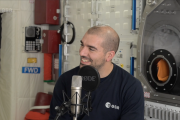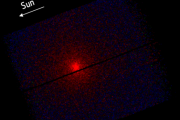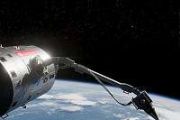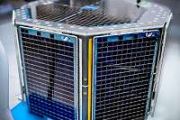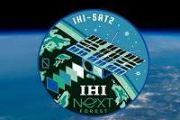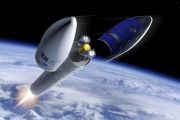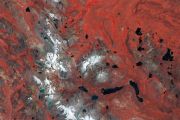
Copernical Team
εpsilon: Sophie Adenot’s first mission name and patch unveiled
 Image:
Image:
ESA astronaut Sophie Adenot’s first mission to the International Space Station now has a name: εpsilon. The mission name and patch were announced today at the Paris Air Show by ESA Director General Josef Aschbacher, French President Emmanuel Macron, and Sophie Adenot, who joined remotely from the United States, where she is training for her spaceflight.
Sophie Adenot is one of the five astronauts selected from ESA’s most recent astronaut class of 2022. Following the successful completion of their basic training in spring 2024, Josef Aschbacher announced during the Space Council in Brussels that Sophie and fellow graduate Raphaël Liégois
President Macron calls Sophie Adenot from Paris Air Show 2025
 Video:
00:10:59
Video:
00:10:59
At Le Bourget Paris Air Show, French President Emmanuel Macron talks with ESA Astronaut Sophie Adenot about her mission 'εpsilon'.
Week in images: 16-20 June 2025

Week in images: 16-20 June 2025
Discover our week through the lens
President of France Emmanuel Macron visits the Paris Space Hub
 Image:
Image:
Marking the first public day of this year’s International Paris Air Show, the President of France Emmanuel Macron visited the Paris Space Hub.
ESA Director General Josef Aschbacher and Director of Human and Robotic Exploration Daniel Neuenschwander welcomed President Macron, introducing him to the assembled French astronauts and a group of young space professionals in attendance.
French ESA astronaut Sophie Adenot joined by video link from the United States, where she is training for her upcoming mission to the International Space Station. Sophie detailed some of her training, explaining that no two days are alike. Fellow astronauts Thomas Pesquet, Jean-François Clervoy and
SpaceX Starship explodes on Texas launch pad
This request seems a bit unusual, so we need to confirm that you're human. Please press and hold the button until it turns completely green. Thank you for your cooperation!
Press and hold the button
If you believe this is an error, please contact our support team.
185.132.36.159 : 5bb06fd9-1f7b-4c26-83cd-0ce6e21f
Best Free Fax App: Top 6 Reliable Choices for Free Online Faxing
 Need to send a fax without a clunky machine or hefty fees? Plenty of people are searching for better ways to handle documents, especially as more work and school tasks shift online. b>The best free fax app offers a simple, effective solution for anyone wanting to send papers quickly from their phone or computer, without the headaches of old-school faxing. /b>
These days, people expect tec
Need to send a fax without a clunky machine or hefty fees? Plenty of people are searching for better ways to handle documents, especially as more work and school tasks shift online. b>The best free fax app offers a simple, effective solution for anyone wanting to send papers quickly from their phone or computer, without the headaches of old-school faxing. /b>
These days, people expect tec NASA raises chance for asteroid to hit moon
 NASA has announced that an asteroid about 200 feet in diameter is now slightly more likely to crash into the moon.
According to the newest data collected, NASA's Center for Near-Earth Object Studies at the agency's Jet Propulsion Laboratory has refined the expected course for Asteroid 2024 YR4 and has given it an increased 4.3% probability of striking the moon on Dec. 22, 2032.
T
NASA has announced that an asteroid about 200 feet in diameter is now slightly more likely to crash into the moon.
According to the newest data collected, NASA's Center for Near-Earth Object Studies at the agency's Jet Propulsion Laboratory has refined the expected course for Asteroid 2024 YR4 and has given it an increased 4.3% probability of striking the moon on Dec. 22, 2032.
T ESA Delivers: 50 years booklet

ESA Delivers: 50 years booklet
50 hallmark achievements across 50 years
Earth from Space: Vienna’s Danube divide
 Image:
A close-up view of Vienna, Austria’s capital city, is featured in this image from April 2025.
Image:
A close-up view of Vienna, Austria’s capital city, is featured in this image from April 2025. SpaceX Starship explodes during routine test
This request seems a bit unusual, so we need to confirm that you're human. Please press and hold the button until it turns completely green. Thank you for your cooperation!
Press and hold the button
If you believe this is an error, please contact our support team.
185.132.36.159 : 5bb06fd9-1f7b-4c26-83cd-0ce6e21f







